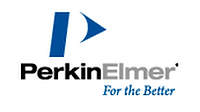New SemiQuant Analysis Tool Simplifies ICP-OES, Identifies Unknown Samples

Image provided by Thermo Fisher Scientific
Thermo Fisher Scientific has introduced a new semi-quantitative analysis tool that simplifies inductively coupled plasma-optical emission spectroscopy (ICP-OES), enabling the identification of unknown samples. This new SemiQuant feature, available to users of the Thermo Scientific™ Qtegra™ Intelligent Scientific Data Solution (ISDS) Software and the Thermo Scientific™ iCAP™ PRO Series ICP-OES, leverages artificial intelligence (AI) technology and neural networks to provide an efficient workflow for composition analysis.
The semi-quantitative approach requires no standard analysis and is based on determining the relative concentrations of elements in a sample rather than obtaining precise quantitative measurement. It is often used for rapid screening of samples or for identifying elemental composition trends, rather than for obtaining exact concentrations. The tool is ideal for laboratories that perform trace elemental analysis (metals and elements) using ICP-OES, and for screening food samples for certain elements.
Leveraging the advantages of SemiQuant during method development can streamline the optimization process, improve method performance, and enhance the quality of analytical results. All SemiQuant results are able to be obtained without the need to run any calibration solutions. The tool’s versatile analysis, from preliminary screening to sample prep and performance assessment, helps to:
- Identify the presence of major and minor elements in samples, providing insights into the scope of the method and potential interferences
- Assess the effectiveness of various sample preparation techniques, allowing users to optimize sample preparation protocols for subsequent quantitative analysis
- Provide an initial assessment of method performance and allow users to evaluate the robustness and reliability of the method
- Detect elements that can cause interferences on wavelength selected for quantitative analysis.
Thermo Fisher Scientific: www.thermofisher.com
Looking for a reprint of this article?
From high-res PDFs to custom plaques, order your copy today!







